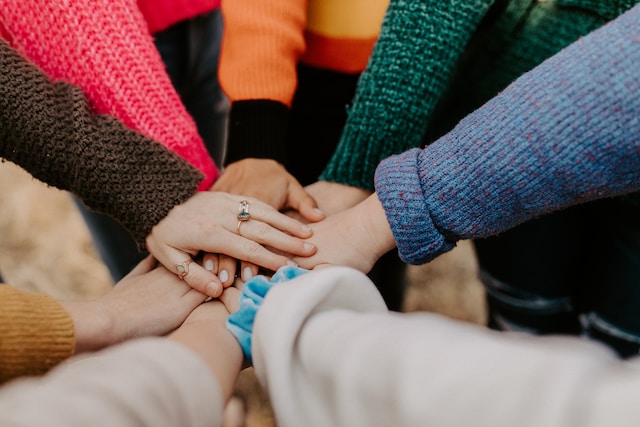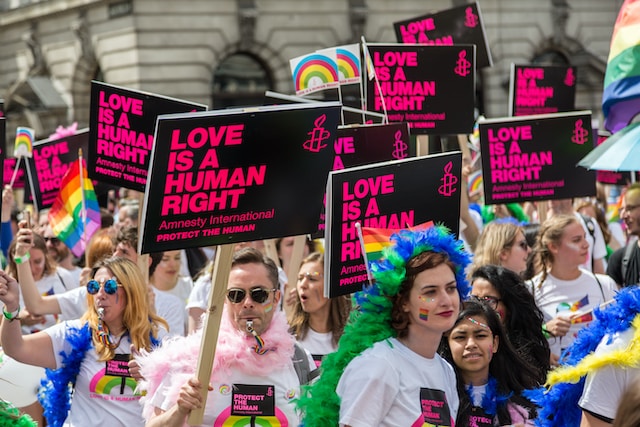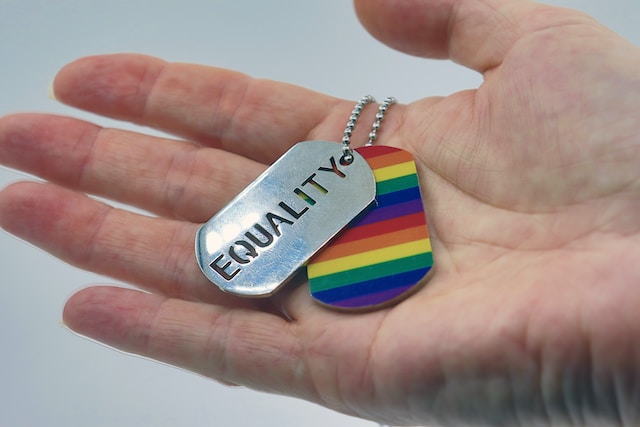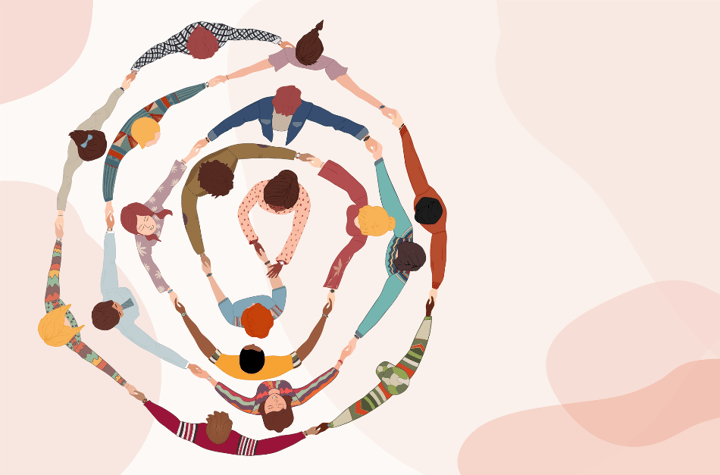Leading Proud: 3 Key Facts for Better LGBTQ2+ Allyship at Work
As a cisgender, heterosexual woman authoring this blog post, I know that for me Pride is a time for reflection, celebration, and immense humility.
Every year, Pride Month invites a flood of new stories and insights centering on LGBTQ2+ communities in the news and on social media that build continued opportunities for learning. Pride is also a reminder each year to challenge the status quo regarding our norms and assumptions about gender/sexual orientation.
At the Humphrey Group, we want to support everyone to lead proud, not just in the month of June, but each and every day.
In this blog post, I begin with my positionality to highlight that celebrating Pride and supporting LGBTQ2+ communities isn’t just work that’s cut out for people who identify as lesbian, gay, bisexual, transgender, queer, and/or more.
As noted in our Pride Month blog series last year, “Leading Proud,” allyship—built in the right way—is integral to helping LGBTQ2+ communities achieve the rights and fairness that they deserve.
Take a look at the following quote from Part II of our Leading Proud series:
Allyship is up there in the top 3 of buzzwords dominating the LGBTQ2+ inclusion landscape right now, and for good reason. To create systemic change, we need critical mass. Statistics Canada estimates that our community comprises about 4% of the population. None of the rights our community has won in recent years, including marriage equality (2005) and protections for gender identity and expression in the Canadian Human Rights Act (2017), would be possible without widespread support. We need people from all walks of life, not just our community, to care about our lives and to work for change.
Why education is integral to meaningful allyship
Practicing allyship means aligning ourselves with the goals of the community we seek to support and building trust by helping that community achieve their goals. In order to do this, education—and more importantly, self-education—is critical.
If you are unsure what the connection is between allyship and education, before you continue on, take a look at the 3 ways to practice allyship in last year’s blog post first.
As highlighted in this post, educating ourselves—as opposed to relying on our LGBTQ2+ colleagues to explain their identities to us—helps us to avoid putting unnecessary burdens on our LGBTQ2+ colleagues. It can also prevent us from committing microaggressions out of ignorance.
Overall, education helps us to better understand and align with the goals of the LGBTQ2+ communities that we seek to support; therefore promoting better allyship at work.
In this post, I want to focus on 3 Q&A resources to help get us started on our education journey. The questions I will cover include:
- What is Pride Month and how did it begin?
- What is LGBTQ2+?
- How can we continue our learning?

What is Pride Month and how did it begin?
Pride reminds many of us of celebration worldwide. Think about the large public parades and parties and even the smaller community gatherings. However, what remains at the heart and foundation of the Pride movement is protest and a fight for human rights.
Pride began on the one-year anniversary of the Stonewall Riots. At the time of the riots (1960s), gay bars like the Stonewall Inn provided a rare refuge for people to freely express themselves and find community when same-sex relations were illegal.
On June 28, 1969, New York City police raided Stonewall Inn, which sparked groundbreaking riots over 6 days, protesting police brutality (Pride 101). The events that unfolded over the 6 days fundamentally changed the discourse surrounding LGBTQ2+ activism in the US.
One year later, to commemorate the event, thousands of people gathered in a march to demand equality, called the Christopher Street Liberation March. With this, the first Pride parade was born.
Thus, Pride isn’t just about displaying rainbow flags out of fun and joy, it’s about paving the way for LGBTQ2+ rights, continuing to demand a more inclusive society, and remembering those who fought for the rights we all have today.
What is LGBTQ2+?
Simply put, LGBTQ2+ is an abbreviation for lesbian, gay, bisexual, transgender, queer or questioning, Two-Spirit, and more. What does the "plus" represent?
- Other gender identities
- Non-binary
- Gender fluid etc.
- Other sexual identities
- Asexual
- Pansexual etc.)
The first 4 letters of this acronym have been used since the 1990s, but more recently, the acronym has further expanded to be more inclusive.
Today, variations of LGBTQ2+ include 2SLGBTQ+ or LGBTQQIA+, centering more specifically on Two-Spirit, intersex, and asexual identities.
If you are not sure of one or more of the terms in the abbreviation, explore a detailed definition of each term in resources such as the Lesbian & Gay Community Services Center and Re:Searching for LGBTQ2+ Health.
This is an important foundational step to understanding who we are supporting and challenging our persisting biases about gender/sexual orientation.

How can we continue our learning?
If you are looking for more resources to continue your learning, I'll list a few places to start that I find to be reliable and full of valuable knowledge:
Foundations
If you’re just beginning your journey to LGBTQ2+ allyship, start with Being an LGBTQ+ Ally from the Human Rights Campaign Foundation.
This resource lays out important foundational knowledge in an accessible way, and provides a list of concrete actions you can take right away to begin practicing active allyship.
If every person becomes more proactive, then inclusive workplace culture will be more prevalent and impactful.
Language
Language plays a critical role in fostering LGBTQ2+ inclusion in the workplace. The language people use shapes attitudes, promotes understanding, and validates the identities and experiences of individuals within the community.
The 2SLGBTQ+ Glosssary is a great starting point for expanding our vocabulary and understanding key terms related to equity, diversity, and inclusion.
You can also look into the The 519. It's a registered charity in Toronto providing education and counselling services as well as space and leadership for LGBTQ2+ communities.
Human Rights
Challenges to LGBTQ2+ communities extend beyond North America to around the world. These challenges not only include stigma, exclusion, and discrimination, but physical and extreme violence.
Explore the importance of human rights as the centre of many issues surrounding LGBTQ2+ communities on the United Nations Human Rights Office of the High Commissioner (OHCHR) website.
Allyship
This recent HBR article on “How to Be a Better Ally to the LGBTQ+ Community” reveals how LGBTQ2+ individuals determine whether someone is an ally based on a 4-year study.
Data
Data is a powerful tool in the fight against injustices. Take a look at increasing initiatives to better recognize the wholeness of LGBTQ2+ individuals’ experiences such as The National LGBTQ+ Women’s Community Survey.
More resources will be updated on this website soon.
Research and News
The Institute for Gender and the Economy (GATE) at the Rotman School of Management provides a wide range of articles related to LGBTQ+ communities including news, research updates, and events.
For continued learning, explore current and future resources by following the tag “LGBTQ+.”

The importance of allyship in the workplace
Appreciating the crucial role of education and allyship is an essential step towards achieving LGBTQ2+ inclusion in the professional environment.
By committing to consistent learning efforts, we can expand our comprehension of the varied identities, life experiences, and challenges faced by the LGBTQ2+ community. Such understanding allows us to act as informed and empathetic allies.
Allyship provides a tangible pathway to establish a workplace environment that is inclusive and supportive. By advocating for LGBTQ2+ employees and standing against discrimination, we can eliminate hurdles, counteract prejudiced practices, and foster equality.
We must keep in mind that the journey of allyship is a constant process of growth and education. By remaining open to diverse perspectives, actively engaging in dialogue, and taking decisive action, we can create a workplace where individuals feel comfortable expressing their true selves without fear of judgment or discrimination.
Let us all recognize the importance of education and allyship in shaping a professional environment where LGBTQ2+ inclusion is not just respected, but celebrated. By doing this, we make a significant contribution towards a more inclusive future for everyone in the workplace.
Considering training as a part of your education journey? Visit The Humphrey Group's website for more information on our comprehensive learning solutions. Start by exploring our popular learning experiences such as Inclusive Leadership and Proud to Lead.
Related Posts
Leading Proud, Part 2: How can allies support our community?
This week’s post focuses on what allies can do (and not do) to show their support and create inclusive spaces for their LGBTQ2+ colleagues.
Read MoreDefining DEI: What Are Some Key Terms I Should Know? Part 2
Deepen your understanding of DEI with essential terms: allyship, intersectionality, privilege, microaggressions, and micro-affirmations. Learn how to be an effective ally and create an inclusive culture
Read MoreFrom Politics to Public Trust: What I’ve Learned About Leadership Communication
Jeff Angel reflects on a career in high-stakes communication and shares how clear, values-driven messaging can help leaders build trust under pressure.
Read More

.png?length=720&name=iStock-1764314726%20(1).png)